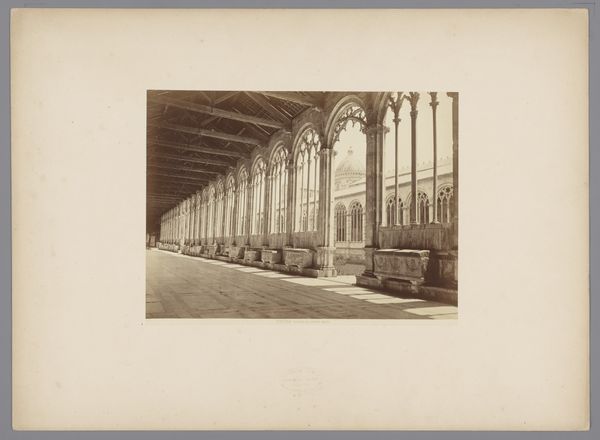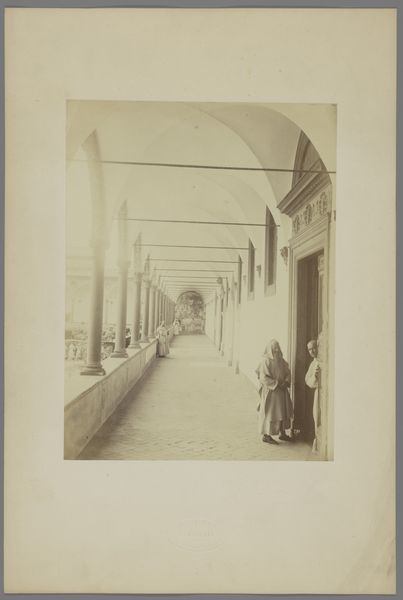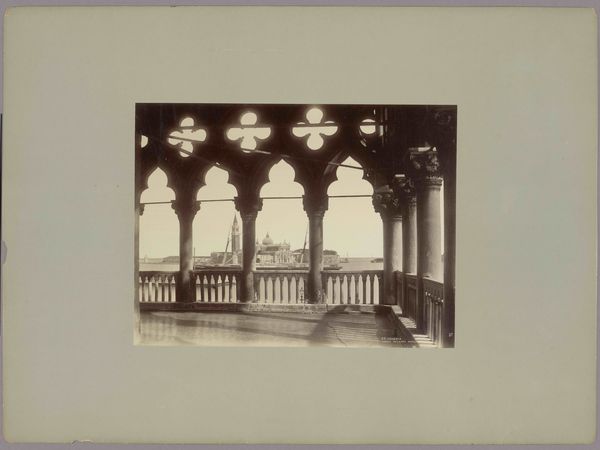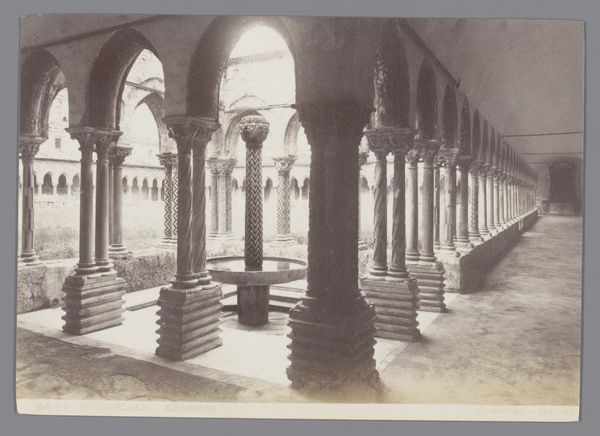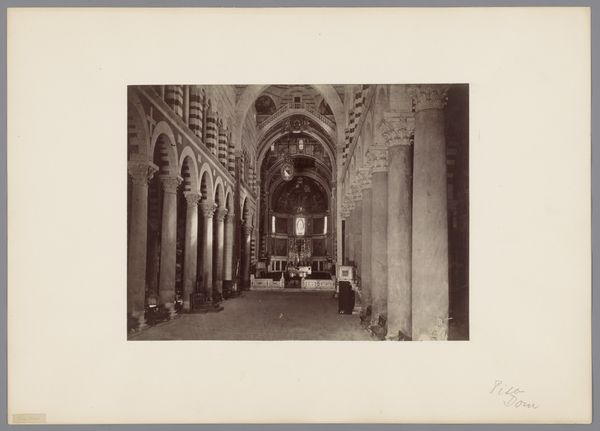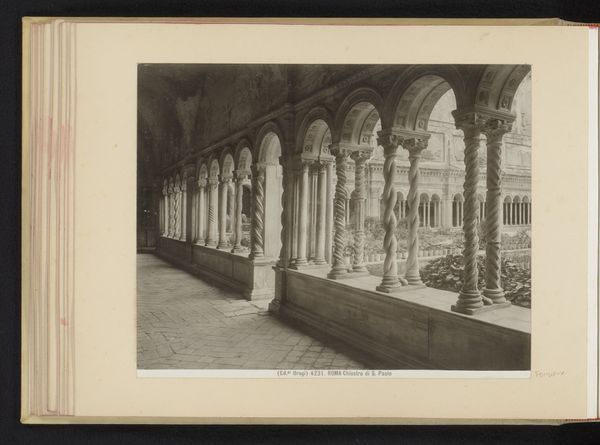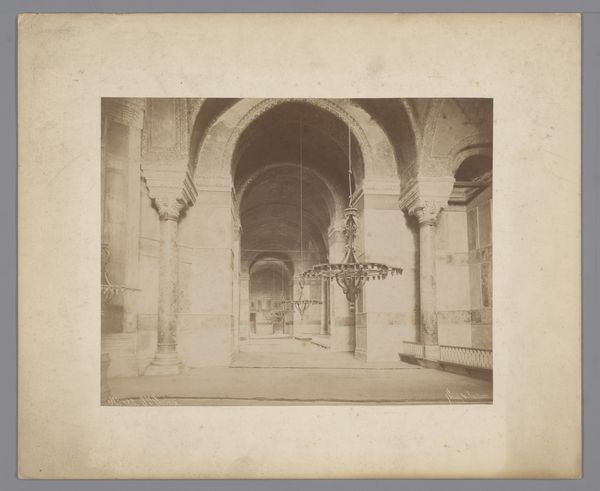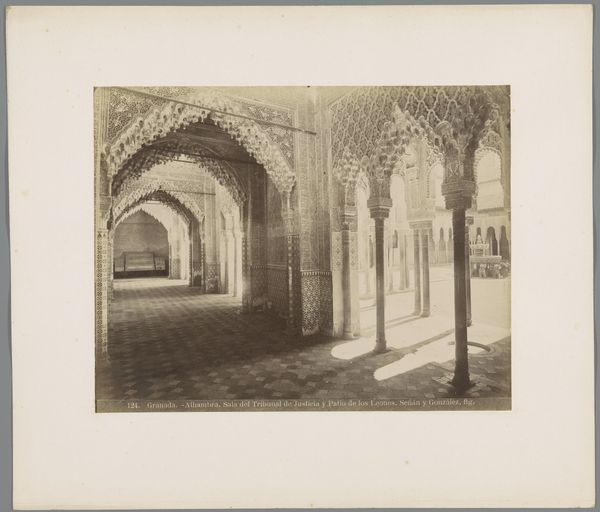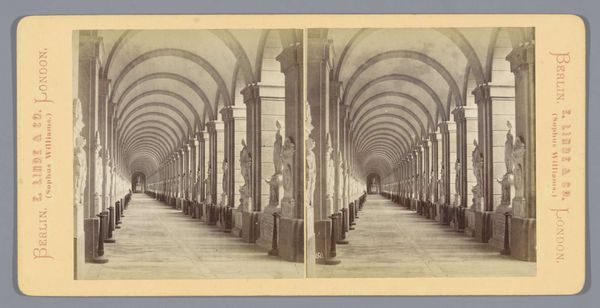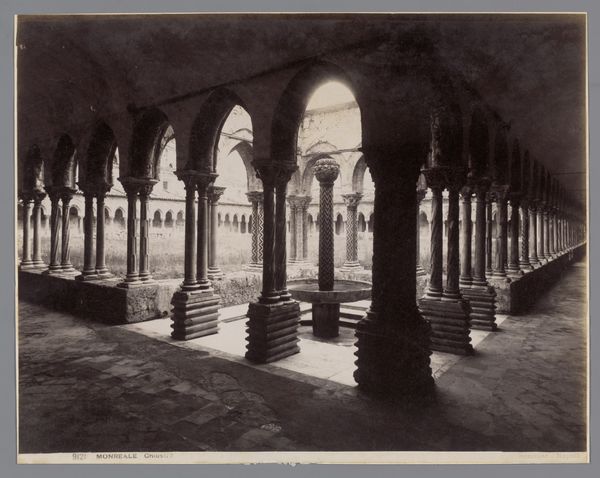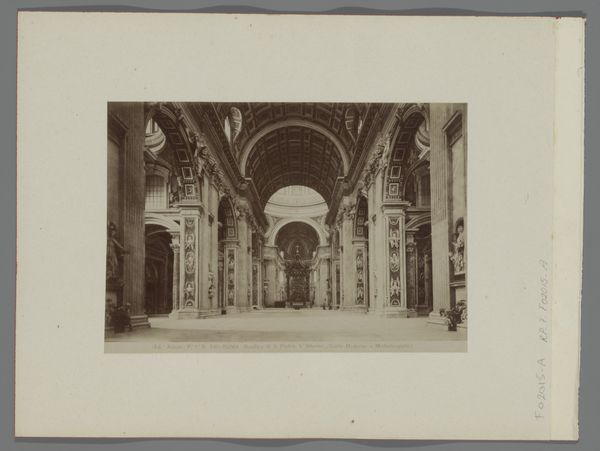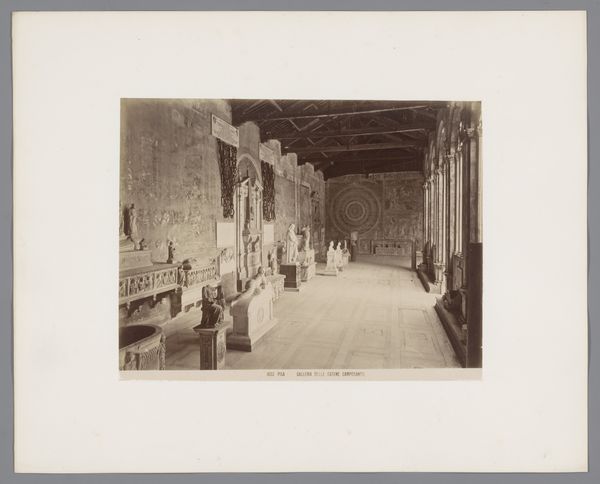
Dimensions: height 201 mm, width 256 mm, height 309 mm, width 384 mm
Copyright: Rijks Museum: Open Domain
Curator: This gelatin-silver print, created sometime between 1860 and 1889, offers us a view into "Kloostergang in de kathedraal van Palermo, Italië"—that is, a cloister within Palermo's Cathedral. The photographer is Roberto Rive. What's your initial impression? Editor: It’s evocative... the strong horizontals and the tunnel-like perspective, but it feels shrouded, almost melancholy. All that fading light seems to imply a narrative of historical abandonment or quiet resilience. Curator: I agree, and it is very much a visual expression of Orientalism through a romantic lens. These cloistered spaces in such photography were, I think, designed to spark the imagination, creating spaces outside of the viewer's ordinary life. Do you pick up on a spiritual quality as well? Editor: Yes, definitely, though the term "spiritual" feels laden here. Consider how these visual frameworks, cloaked in an Orientalist aesthetic, helped justify colonial ideologies through a "romanticizing" of the East, creating a binary of West and Other. Was the intention for transcendence, or perhaps something more… calculated? Curator: An interesting question. Consider the architectural details—the repetition of arches and columns—which evoke an atmosphere of devotion and contemplation. The use of light is masterful here too; how it emphasizes the depth of the space, beckoning you into the distance. I suppose I’m suggesting the composition guides the mind toward the eternal and ideal. Editor: I understand your point. Perhaps we should question why Western eyes found particular interest in these spaces in Palermo—Sicily—during this period. Whose gaze were these photographic archives really catering to, and what socio-political messages did they subtly reinforce? Curator: Food for thought. It really does shift how you see it, doesn’t it? These serene images often had, as you note, complicated social contexts. It goes to show the power of symbols. Editor: Absolutely. Revisiting such classic images allows for a valuable discourse, linking history with current societal perspectives. Curator: I'm left wondering how many more layers are veiled beneath what appears a mere architectural photograph, or how we should be asking these kinds of questions of photography now.
Comments
No comments
Be the first to comment and join the conversation on the ultimate creative platform.
